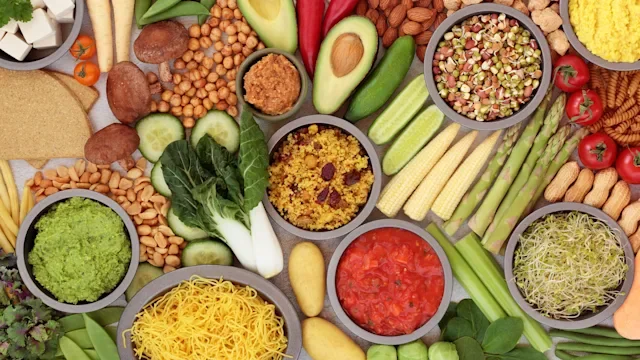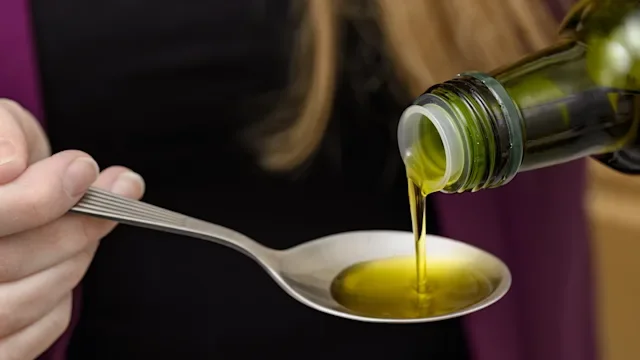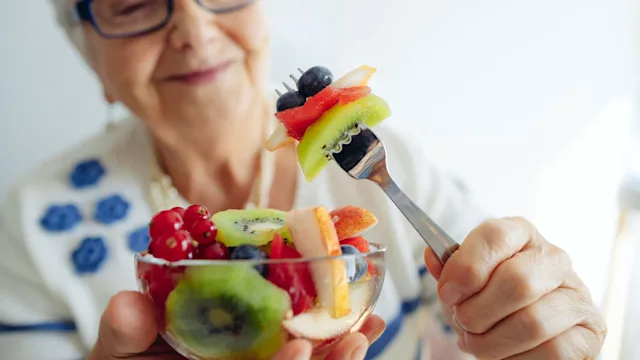Key takeaways:
Each country has its own government agency that decides the health and safety of food additives.
Some countries, like the U.S., consider most food additives to be safe until proven otherwise. Other countries test any new additives before letting them hit grocery store shelves.
If you’re trying to avoid certain food additives, it helps to know what to look for on nutrition labels.
In the U.S., both the FDA and Food Safety and Inspection Service (FSIS) regulate foods and drinks sold in stores. Other countries have their own regulatory agencies. While these groups all oversee food safety, they don’t always agree on what counts as safe.
The FDA uses a system called Generally Recognized as Safe (GRAS), which means many additives are assumed to be safe unless new research shows otherwise. This approach often relies on expert opinion rather than rigorous testing of new additives.
European Union regulators, on the other hand, require companies to prove a food additive is safe before it goes on the market. These differences explain why some foods that are common in U.S. grocery stores are banned in other countries.
But which foods and ingredients are sold in the U.S. while being banned abroad? Keep reading to learn more about banned foods that you might find in your kitchen.
1. Titanium dioxide
Titanium dioxide is a chemical that’s commonly added to U.S. foods. But many people don’t recognize the name because it’s usually hidden on nutrition labels. Terms like “artificial color” or “added color” may mislead you into consuming titanium dioxide without even realizing it.
Foods banned in other nations for containing titanium dioxide can include:
Titanium dioxide is banned in the EU, over concerns it could have cancer-causing properties. But it’s not clear whether this risk applies to consuming titanium dioxide in food. It’s also not clear how much you would have to consume for this risk to be significant.
In 2023, California took matters into its own hands to try to ban titanium dioxide and other food additives such as brominated vegetable oil (BVO) from the food chain (see below). The so-called “Skittles ban” didn’t result in titanium dioxide being banned. And, today, it’s still found in foods in Canada and the U.S.
2. Brominated vegetable oil
Brominated vegetable oil (BVO) is a food additive used in some citrus-flavored drinks to help keep the flavor evenly distributed. Essentially, it helps prevent the citrus oils from floating to the top. It has long been banned in the EU, the U.K., and Japan due to concerns about its potential effects on human health.
What’s really in your coffee creamer? That silky swirl might contain more than just cream and sugar. Here’s what to know about what you’re sipping every morning.
Should you worry about Red Dye No. 40? It’s everywhere — from cereal to soda — and it’s raising red flags for some health experts. Here's what the science says.
Not all processed foods are created equal. What makes a food ultra-processed? Learn how to spot different processed foods — and why it could matter for your long-term health.
In November 2023, the FDA proposed banning BVO in the U.S., citing new findings that it may no longer be considered safe for human consumption. This move came shortly after California passed its own ban as part of the California Food Safety Act.
Animal studies have linked bromine — a component of BVO — to health conditions such as:
Thyroid dysfunction
Memory problems
Nerve issues
Skin lesions
Fertility concerns
Read more like this
Explore these related articles, suggested for readers like you.
As awareness has grown, companies like PepsiCo have voluntarily removed BVO from many of their products. While it’s becoming less common in beverages today, it’s still a good idea to check the nutrition label if you’re concerned about this additive.
3. BHA and BHT
Butylated hydroxyanisole (BHA) and butylated hydroxytoluene (BHT) are synthetic preservatives added to processed foods to extend shelf life and prevent fats and oils from spoiling. You’ll find them in many pantry staples, including:
Breakfast cereals like Kellogg’s Apple Jacks
Jiffy Corn Muffin Mix
Frozen foods, such as Stouffer’s frozen pizza
Bugles corn chips
Cake mixes, including Pillsbury
These additives are banned in the EU but not in the U.S. Animal studies suggest that high doses of BHA and BHT may increase the risk of several different cancers. But trying to prove this link in humans isn’t easy. The data available so far isn’t strong enough to prove they’re harmful to humans at the levels typically found in food.
So, for now, BHA and BHT remain legal for use in processed foods in the US, even as questions about their long-term health effects continue to be debated.
4. rBST
Recombinant somatotropin (rBST) is a hormone used in cows to increase milk supply. Many dairy-based products contain rBST, such as:
Milk
Yogurt
Cheese
Ice cream
The hormone rBST doesn’t appear to harm humans directly. However, it can cause health issues in dairy cows, including udder infections and reproductive problems.
Currently, rBST is allowed in the U.S. However, some U.S.-based companies — like Ben & Jerry’s — oppose the use of rBST in their products. Europe and Canada have both banned rBST.
5. Artificial food dyes
Some countries have completely banned artificial food dyes. But most countries — including countries in the EU — haven’t officially banned artificial food dyes. Rather, they require them to be labeled on all packaging.
Food dyes are used to make food look more appealing and bright. Some natural food dyes are available. But many ultra-processed foods use synthetic food dyes. These include foods like:
Candy
Instant pasta
Pretzels
Fruit drinks
According to the FDA, the use of artificial food coloring has increased over five times since the 1950s.
There’s growing concern that food dyes may affect behavior in children. At least one artificial food dye (Blue Dye No. 1) is known to cross into brain tissue. And research shows that food dyes may worsen symptoms of attention-deficit hyperactivity disorder (ADHD). Not only that, but food colorings also contain benzidine, which is linked to cancer development.
In response to these concerns, the FDA recently banned Red Dye No. 3 from use in foods sold in the U.S. This dye has been shown to cause cancer in animal studies. And companies are required to phase it out of food products and medications by 2027.
Even without legislation, some companies are taking the step to remove artificial food dyes from production. Grocery stores whose products are free of artificial food coloring include:
Some brands don’t use artificial food coloring either. Examples include:
6. Trans fats
Trans fats are a type of fat found in both natural and artificial forms. Small amounts occur naturally in meat and dairy. But the main concern is with artificial trans fats. Food companies once used these fats to make products last longer and taste better. So they became common in:
Margarine
Baked goods
Fried foods
Packaged snacks
These industrial trans fats are strictly limited in the EU because:
They raise the “bad” cholesterol — low-density lipoprotein (LDL) — while lowering the “good” cholesterol, high-density lipoprotein (HDL).
They increase the risk of heart disease and stroke.
The EU doesn’t fully ban them, but it caps their use at no more than 2 g per 100 g of fat in food. In practice, that limit has pushed artificial trans fats out of the market, and most foods in Europe no longer contain them.
In the U.S., the FDA has ruled that partially hydrogenated oils — the main source of artificial trans fats — are no longer “generally recognized as safe.” Most have been removed from the food supply, but small amounts can still be present. U.S. labeling rules also allow products with less than 0.5 g per serving to round down to “0 g trans fat,” which means they can still sneak into your diet.
List of foods banned in other countries
European and other international food safety authorities often restrict or ban certain additives and ingredients based on precautionary approaches that aren’t always shared by U.S. regulators.
Here are examples of foods that have been banned or reformulated (the ingredients changed) in other countries:
Skittles: reformulated in Europe because the U.S. version contains the banned ingredients titanium dioxide and artificial dyes (Yellow No. 5 and Yellow No. 6)
Froot Loops: banned and reformulated in Canada and some European countries for artificial dyes
Little Debbie Swiss Rolls: banned in Europe for Yellow No. 5 and Red No. 40
Twinkies: banned in parts of Europe for Yellow No. 5
Lucky Charms: banned in some European countries for Red No. 40 and other synthetic dyes
Gatorade: banned in some EU countries for Brominated Vegetable Oil and food dyes
Kellogg’s Frosted Flakes: reformulated in Europe and Japan because of banned BHT preservative
Pop-Tarts: banned in the EU and U.K. for Red Dye No. 3
Wheat Thins: banned in the U.K., EU, and Japan for BHT preservative
Stove Top stuffing: banned in the U.K., EU, and Japan for BHA and BHT
Coffee Mate creamer: banned in Denmark, Norway, Iceland, and Switzerland
Ritz Crackers: banned in some parts of Europe and other parts of the world for trans fats.
How to identify ingredients on food labels
Checking ingredient labels is one of the easiest ways to cut back on potentially harmful additives. But not all ingredients are easy to recognize. Here's what to look for:
Artificial dyes like Red No. 40, Yellow No. 5, and Blue No. 1 are usually listed by name.
Preservatives like BHA and BHT are also listed directly on the ingredients list.
Titanium dioxide may show up as “artificial color” or “added color.” It’s often used in candy, coffee creamers, and baked goods.
rBST won’t show up in the ingredients, but milk and dairy packaging must say if it’s not used. Look for phrases like “from cows not treated with rBST.”
If you’re unsure about an ingredient, check the brand’s website. You can also contact a company directly to ask. Most companies will respond.
The bottom line
Some food additives used in the U.S. have been banned in other countries due to concerns about long-term health risks. You don’t have to avoid all processed foods. But learning to scan ingredient lists can help you steer clear of additives you’d rather skip. When possible, choose brands that use simpler, more transparent ingredients. Small changes in what you buy and eat can lead to a healthier diet over time.

Why trust our experts?


References
Agrawal, S. (2023). New California law bans 4 food additives used in common sweets. What to know. Cal Matters.
Aldi. (n.d.). Our food philosophy.
American Cancer Society. (2024). Recombinant bovine growth hormone.
Annie’s. (n.d.). Frequently asked questions.
Ben & Jerry's. (n.d.). Ben & Jerry's opposes the approval and use of rBGH.
Bendig, P., et al. (2012). Brominated vegetable oil in soft drinks — An underrated source of human organobromine intake. Food Chemistry.
Botterweck, A. A. M., et al. (2000). Intake of butylated hydroxyanisole and butylated hydroxytoluene and stomach cancer risk: Results from analyses in the Netherlands Cohort Study. Food and Chemical Toxicology.
Chomps. (n.d.). Our products, ingredients & nutrition.
Collier, R. J., et al. (2014). Update on human health concerns of recombinant bovine somatotropin use in dairy cows. Journal of Animal Science.
EFSA Panel on Food Additives and Flavourings. (2021). Safety assessment of titanium dioxide (E171) as a food additive. EFSA Journal.
European Chemicals Agency. (n.d.). EC inventory.
European Food Safety Authority. (2015). EFSA’s assistance for the 2015 Codex Committee on Residues of Veterinary Drugs in Food (CCRVDF) in relation to rBST. EFSA Journal.
European Food Safety Authority. (2021). Titanium dioxide: E171 no longer considered safe when used as a food additive.
European Food Safety Authority. (2024). Food colours.
European Food Safety Authority. (2025). Qualified presumption of safety (QPS).
Food Safety. (n.d.). Trans fat in food. European Commission.
Food Standards Agency. (n.d.). Importing drinks.
Gogo Squeez. (n.d.). Our process & ingredients.
Ito, N., et al. (1985). Carcinogenicity and modification of the carcinogenic response by BHA, BHT, and other antioxidants. Critical Reviews in Toxicology.
KIND. (n.d.). Welcome to KIND.
Miller, M. D., et al. (2022). Potential impacts of synthetic food dyes on activity and attention in children: a review of the human and animal evidence. Environmental Health.
Pan American Health Organization. (2021). Brazil and Peru join growing number of countries in the Americas that are eliminating industrially produced trans fats.
Potera, C. (2010). The artificial food dye blues. Environmental Health Perspectives.
Rambler, R. M., et al. (2022). A review of the association of blue food coloring with attention deficit hyperactivity disorder symptoms in children. Cureus.
ScienceDirect. (n.d.). Butylated hydroxytoluene.
Strom, S. (2013). PepsiCo will halt use of additive in Gatorade. The New York Times.
Trader Joe’s. (n.d.). Product FAQs.
Trasande, L., et al. (2018). Food additives and child health. Pediatrics.
Unreal. (n.d.). Hold on to your tastebuds.
U.S. Food and Drug Administration. (2013). A food labeling guide.
U.S. Food and Drug Administration. (2016). Guidance for industry: Frequently asked questions about GRAS for substances intended for use in human or animal food.
U.S. Food and Drug Administration. (2017). Color additives history.
U.S. Food and Drug Administration. (2023). FDA proposes to ban food additive, continues assessments of additional chemicals.
U.S. Food and Drug Administration. (2024). Brominated vegetable oil (BVO).
U.S. Food and Drug Administration. (2024). Final determination regarding partially hydrogenated oils (removing trans fat).
U.S. Food and Drug Administration. (2025). FDA to revoke authorization for the use of red no. 3 in food and ingested drugs.
Weir, A., et al. (2012). Titanium dioxide nanoparticles in food and personal care products. American Chemical Society.
Whole Foods Market. (2011). Whole Foods Market doesn't do artificial coloring.
Williams, G. M., et al. (1999). Safety assessment of butylated hydroxyanisole and butylated hydroxytoluene as antioxidant food additives. Food and Chemical Toxicology.


















